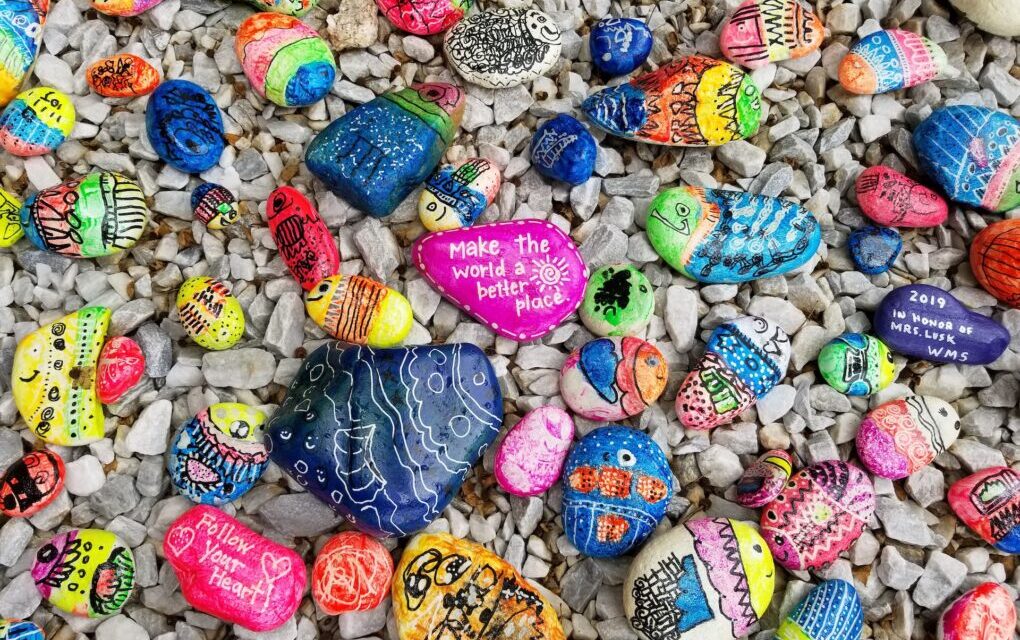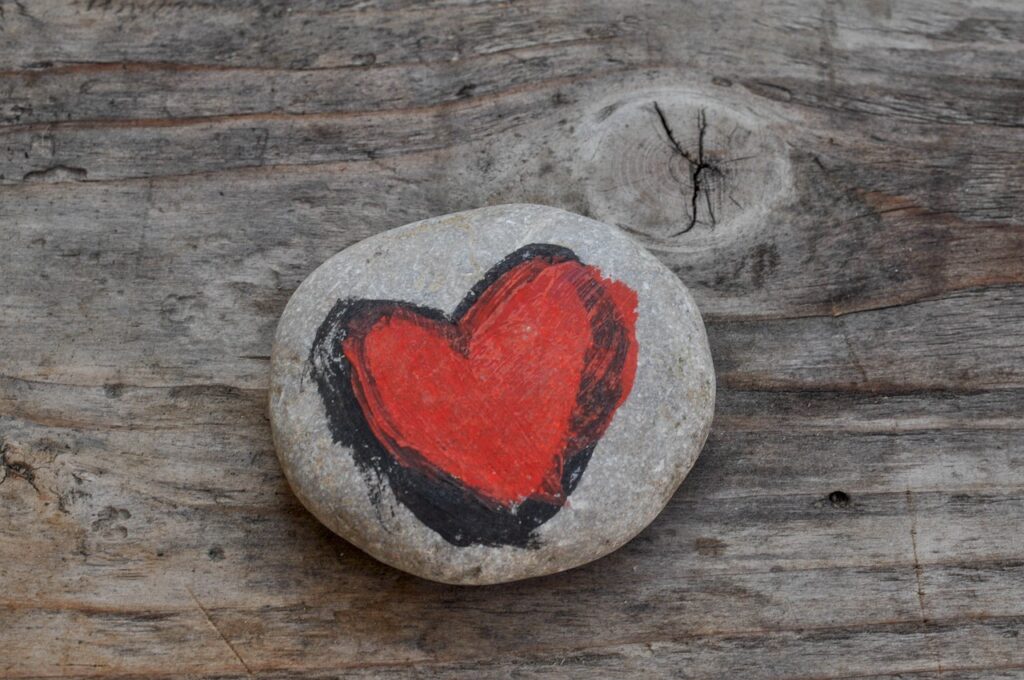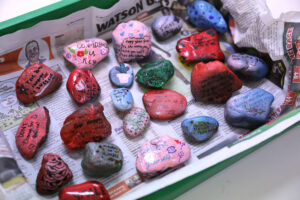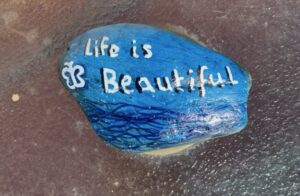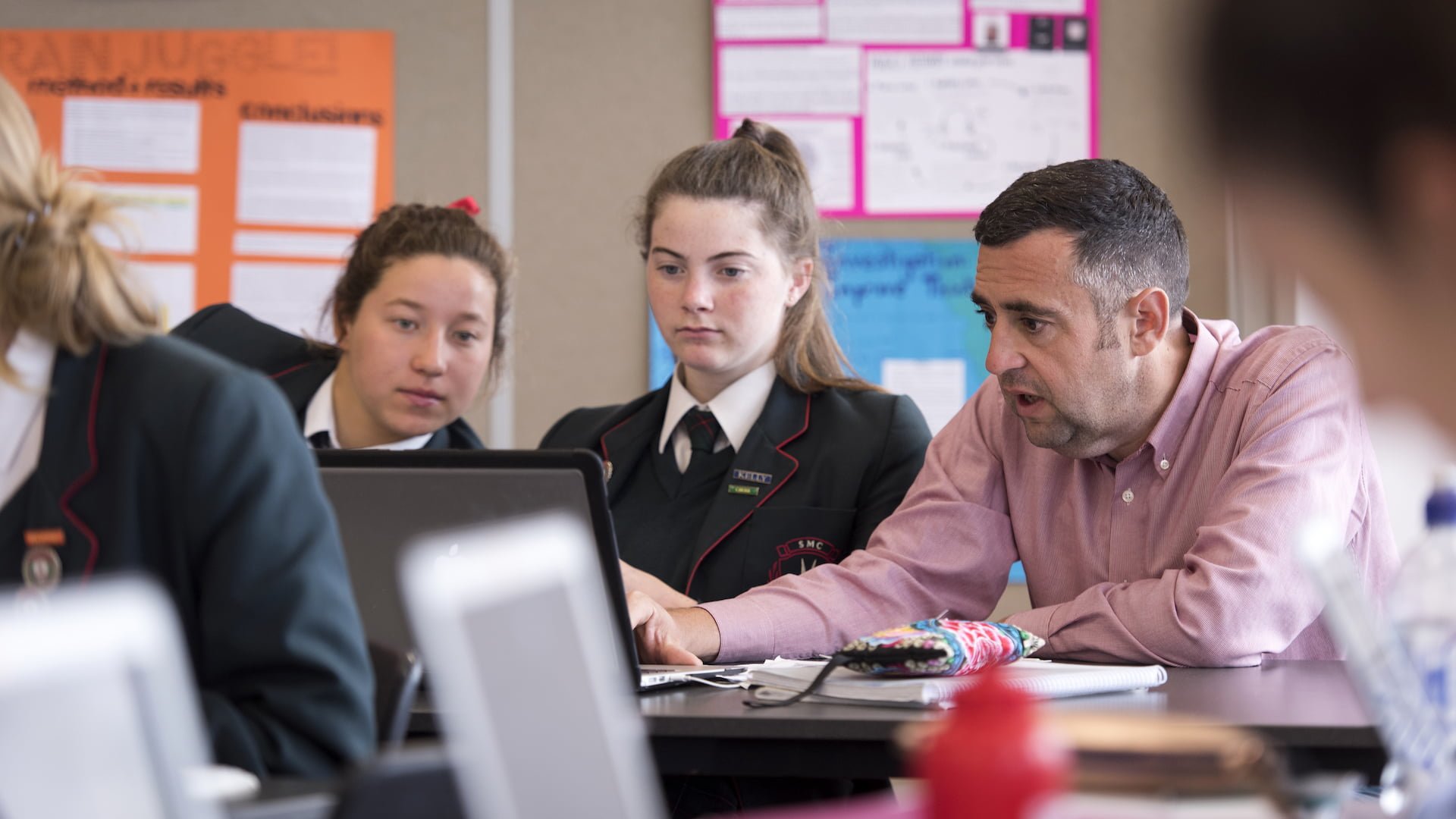Teaching kindness in the classroom using rocks sounds crazy. However, we can stimulate chemicals in kids that make the kindness contagious.
This morning I was waiting in the sunshine for a student to meet me for a chat. She has been having problems with her friendship group. Anyway, while I was waiting, I noticed the sun was glinting off a little rock in the garden. I went over and picked it up. It said, “You’ve got this!” I don’t mean it talked to me…the message was written on the rock in pretty coloured writing. It was a strange little surprise and it made me smile.
Since that first sighting, I’ve seen two other painted rocks. One said, “You’re enough” and the other, “Hi Gorgeous!” So, I asked around and found the source.
The rocks are part of our school’s Kindness Rocks project. Our Year 8 students have all painted rocks with kind messages and hidden them around the school. When you find one of these rocks you can gift it or re-hide it so someone else can find it.
Why do we need kindness rocks?
Why are we spending time painting rocks at school? Surely there’s grammar to learn and mathematics and cybersafety and all those other pressing demands? Sure. However, nothing is as pressing as our mental health and the rocks are a tiny part of our strategy for cultivating positive mental health.
It works like this, fundamental to human survival is our sense of community. It keeps us safe and it helps us prosper. When there is a threat the community looks after one another, because instinctively, we know we are stronger together. In case we forget that fact, Mother Nature has developed some surprising bonding agents…the chemicals of kindness.
Acts of kindness, like leaving a painted rock for someone to find, release in humans three main chemicals; oxytocin, serotonin and endorphins. Together they have a profoundly positive impact on our bodies and our mental health, they also provide a lovely, natural high.
This chemical shot is enjoyed by not only the kind deed doer, but also the recipient of a kind act… AND anyone who witnesses the kind act. The good feeling is contagious.
The chemicals of kindness
Oxytocin is sometimes called the love drug. We get our first hit when we are breastfed by our mothers. That closeness fires a chemical that bonds us and ensures our mothers care for us despite the lack of sleep, nappies and screaming!
Throughout life we are topped up with oxytocin when we touch or hug others, when we have sex and surprisingly, even when we are just kind to one another.
Oxytocin not only makes us feel good, but it lowers our blood pressure and reduces anxiety.
Serotonin has a huge range of functions in the body, however, it is known as the happy chemical because of its role in stabilising mood.
If a person has too little serotonin they may suffer from depression, anxiety or obsessive-compulsive disorder. One of the ways you can increase your serotonin levels naturally is through acts of kindness.
Endorphins are also released when we participate in acts of kindness. These are natural painkillers. You know that feeling when you stub your toe and it is incredibly painful for a couple of seconds but then suddenly there is a rush of blood and the pain seems to be blocked? That relief is the endorphins kicking in.
So, if we know that these three very helpful chemicals are released through acts of kindness, it makes sense that we employ acts of kindness as part of our daily practice to feel better and to make us happier and healthier.
Kindness Practice
Even though acts of kindness help us feel better, the effects are not long-lasting. For this reason, we need to make a point of turning kindness into a deliberate practice. We need to do it daily.
Many counsellors encourage their patients to keep a kindness journal so they can be more mindful of their kindness practice.
At our school, Santa Maria College, kindness practice is planned. All students in all year groups are taught the benefits of kindness and are involved in activities that train them to take the time and effort to be consistently kind.
The hope is, they will feel the positive effects and continue their efforts throughout life. We also hope they go home and the kindness catches. It would be nice to start a kindness pandemic!
Adolescents are beginner learners
We know that as adolescents, our girls are beginner learners when it comes to social skills and managing their emotions. Consequently, they are not always kind. A conscious focus on social-emotional learning is vital at this stage in their development. A consistent focus on kindness will help build skills and resilience.
It is good to know that we are not doing all the teaching alone. Mother Nature will reinforce these lessons throughout the girls’ lives. She will reward them with good mental and physical health, strong connections with others, and those little chemical highs. And, maybe, we won’t need to have so many chats about social issues.
Linda would love to meet you on her Facebook page or you can ask to have her blog articles delivered to your inbox below.
Written by Linda Stade ©Santa Maria College: All rights reserved

